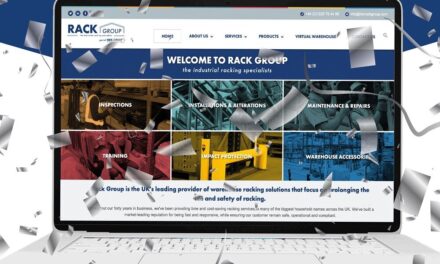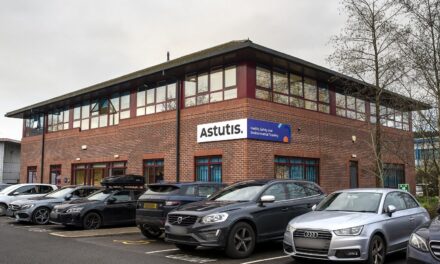 The new Machinery Directive 2006/42/EC came into force in 2009, and while machine builders must deal primarily with the sections on ‘scope’ and ‘conformity assessment’, the main challenge for end users lies in the issue of upgrading or interlinking machinery. Here, it is vital to ensure that the upgraded machine complies with legislation. Stewart Robinson, consultant engineer at Pilz Automation Technology explains
The new Machinery Directive 2006/42/EC came into force in 2009, and while machine builders must deal primarily with the sections on ‘scope’ and ‘conformity assessment’, the main challenge for end users lies in the issue of upgrading or interlinking machinery. Here, it is vital to ensure that the upgraded machine complies with legislation. Stewart Robinson, consultant engineer at Pilz Automation Technology explains
In the current economic climate, many industries no longer have the budgets available to invest in new plant and machinery. This means that for many end users the only practical alternative left is to upgrade or optimise existing plant. However, it’s important to remember that modifications to existing machinery carried out after 29th December 2009 might fall under the scope of the new Machinery Directive. Many end users are unaware that an existing declaration of conformity is rendered invalid if machinery undergoes a ‘significant change’.
Therefore, it’s important to exercise caution when linking old and new machinery. The key question here is whether it represents a ‘significant change’, because if it does, the conformity assessment procedure will need to be repeated. Generally, this will always be the case when a machine’s performance data is changed. Ultimately, it’s important to check every change in detail – ideally before the change is made. This is the only way to assess the processes and measures that will be involved.
Mandatory marking
Extending the presumption of conformity for EN 954-1 has not necessarily helped to simplify application of the standards. Even if EN 954-1 and EN ISO 13849-1 can be applied in parallel until the end of 2011, there are still some issues to bear in mind. Many of the C standards listed under the current Machinery Directive already refer to EN ISO 13849-1 and EN 62061. In these cases, application of EN 954-1 would no longer enable presumption of conformity directly, so machine manufacturers who wish to adhere strictly to the C standards would have to apply EN ISO 13849-1 or EN 60261.
In the case of interlinked machinery, the position of the standards also requires attention. For example, on two stand alone presses built in 1998, manual loading is to be replaced by a robot and the two presses are to be interlinked. While the functional safety of the presses is based on EN 954-1, the robot must be designed in accordance with EN ISO 13849-1 to comply with its C standard. As a result, the interfaces between the individual machines are based on different standards, so cannot be assessed.
To represent the current state of the art, the end user would have to design the entire plant in accordance with the new standard. This can prove difficult, as the safety related characteristic data is unlikely to be available for the components on the old presses, and because the cost of exchanging all the safety related components would be prohibitive. In this case, the robot will have a declaration of incorporation in accordance with the Machinery Directive 2006/42/EC, probably with reference to EN ISO 13849-1, while the presses will have a declaration of conformity in accordance with the Machinery Directive 98/37/EC, with reference to EN 954-1.
The interfaces and additional protective equipment will require a risk assessment. Functional safety must be categorised using EN 954-1 and EN ISO 13849-1. By categorising functional safety in accordance with both standards, EN 954-1 can be applied for the interface to the presses, while EN ISO 13849-1 can be applied for the interface to the robot. As such, the requirements of all the sub-assemblies can be met. As a result, the requirements of the C standard would be fulfilled on the robot, and the end user would have established compliance for the entire plant.
From risk to conformity
The CE marking process is carried out in clearly defined steps. The first thing to establish is whether the planned upgrade constitutes a significant change and whether stand alone machines are interlinked to form one complete system. This is a given when two presses are interlinked using a robot, so a declaration of conformity must be produced for the complete system in line with the new Machinery Directive.
A risk assessment must be carried out for the robots and interfaces in order to work out the relevant safety measures. This will be used as the basis for developing a safety concept, which will describe all the mechanical, electrical and other measures necessary for plant safety. Regular function tests are also required on the presses (i.e. the existing machines which are already CE certified).
The next step is to specify the safety requirements via the safety design. Initially, the decision as to which components to use in which type of safety related design is product neutral. If necessary, other risk reduction measures may be defined, such as safety guards. This is followed by system implementation, from the selection and purchase of the required components, through to training for operating and maintenance staff.
The process is completed by verifying the safety functions in order to demonstrate that the safety measures that have been implemented meet all the requirements. This includes checking the operating manual, as well as carrying out safety checks on all safety related components. Next are the noise level measurements and tests on the protective earth conductor and insulation. If everything is in order and is working perfectly, the final report can be produced and nothing else stands in the way of the declaration of conformity.
Conclusion
Responsibility for machinery safety lies with the end user and cannot be abdicated to the manufacturer. The end user is also responsible if they have commissioned a systems integrator to upgrade a machine. They must ensure that the machine upgrade complies with current legislation. If the end user doesn’t have this expertise, a third party should be commissioned to assist with these upgrades, assess the results in terms of safety and, if necessary, repeat the CE marking process.







